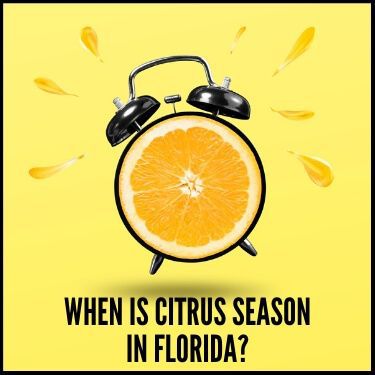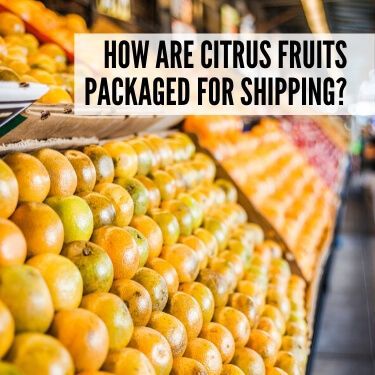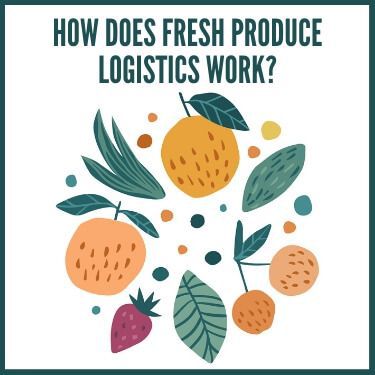When working in any of the food industries, fresh produce logistics is an ongoing priority. After all, ensuring that foods arrive at their destination (supermarket, restaurant, consumer’s door, etc.) in perfect health is a crucial ingredient in the recipe for success. Get it wrong, and positive steps in other parts of the venture will count for nothing. This extends to all aspects before and after the freight transportation processes. Some foods do not require huge levels of care. However, citrus fruits and vegetables require great care due to their vulnerabilities to temperature changes and surface damage.
Ensuring that citrus foods are transported in the most efficient manner isn’t only a matter of pleasing consumers. The FDA Division of Plant and Dairy Food Safety 2008 regulations set clear guidelines and expectations. They are focused on minimizing microbial dangers. This supports appropriate fresh produce logistics to protect growers, clients, and consumers alike by promoting the transportation of fresh citrus foods that are nutritious and safe.
Our comprehensive guide below provides you with everything you need to know about fresh produce logistics and shipping citrus.
Given its climate, the Sunshine State is naturally the perfect place for growing a wide range of fruits and vegetables. Florida is well known for producing large quantities of various citrus fruits. Still, it is most synonymous with oranges. In fact, studies show that 74% of oranges and 67% of all citrus fruits in the U.S. are grown in Florida alone. The industry forms a significant part of the state’s economy. After all, oranges and other fruits are consumed in large quantities in Florida while also being exported to other parts of the country.
The history of commercial orange farming in Florida can be dated back to the early parts of the 19th century while the sandy soils provide perfect growing conditions even to this day. The Sunshine State is well-known for producing a wide range of variants such as Navel, Hamlin, Pineapple, Ambersweet and Valencia. The orange growing season runs from October to June, with over 74 millions citrus trees producing over 200 million boxes of oranges. Incredibly, almost 90% of all harvested fruits are turned into orange juice, frozen, or canned goods.
Florida’s orange farming economy is the second largest on the planet, surpassed only by Brazil’s. Most brands and sellers keen to promote the fact that oranges were grown in the Sunshine State. Consequently, there is no doubt that oranges are one of the first things people associate with Florida. Crucially, any business looking to purchase, use, or sell oranges will probably focus on Florida’s thriving market.

Florida’s orange growing season runs from October to June each year, which is reflected by the seasons for other citrus fruits like grapefruits and lemons. It’s not quite an evergreen growing situation. Nonetheless, the fact that oranges are harvested for nine months of the year provides a far more stable market than many other fruits and natural produces. This is one of the contributing factors behind Florida’s ability to produce more oranges than the rest of the U.S. combined.
The fact that a large percentage of Florida’s oranges end up in juices rather than whole fruits allows the industry to enjoy positive returns throughout the year, even during the three-month spell where they aren’t harvested. There are over 570,000 acres of land used for orange farming. Polk County remaining the most popular region. However, the number of growers in the northern and southern areas of the city has increased dramatically since the freezes of the 1980s.
Some of the more interesting facts about the state’s orange farming include;
While the orange growing season runs from October through June, there are several specialty citrus fruits that are grown in the region between October and April. However, orange sales significantly outweigh those of the other citrus fruits grown in the region.
Wondering how to ship lemons on a freight truck? See how the right partner can help.
Oranges and citrus fruits are pretty cheap to buy on an individual basis, or even in a single crate. Therefore, business relying on citrus sales will naturally need to trade large quantities to generate worthwhile rewards. Freight transit by the truckload is the only solution that should be considered. Oranges and other citrus fruits, even bigger produce like grapefruits, can be packed and transported with thousands of items in each shipment. This is the most-efficient solution for domestic and international shipments alike. When handled correctly, it ensures that time and money are utilized in the best possible fashion.
Citrus fruits, Floridian or otherwise, must be treated with care throughout the transportation processes. While they aren’t as susceptible to damage as some fruits, their delicate nature relates to bruising and skin damage as well as the threat of ‘going off’. Following a successful harvest and packaging process, they need to be kept in perfect condition on their journeys. Moreover, they need to reach their intended destination in the quickest time due to limited lifespans. Even when the right precautions are in place.
Oranges are exported all over the world, albeit primarily in the form of 100% orange juice, and boxes can find their way to consumers throughout North America, with around 23% of exported oranges heading to Canada. The OJ products reach Asia, Europe, Africa and South America too. Other citrus fruits, like grapefruit, are more commonly sent to other territories with 24% heading to Japan alone. Whether the entire journey takes place on the road or there is a stop before reaching freight flights or boats, truckload shipments are most common.
One of the most popular places that Florida oranges end up is New York. Check out our Freight Shipping From Florida to New York page for more information on how goods are shipped between the two states.

Packaging is an important aspect of logistics, regardless of the products in question. However, it takes on an added sense of importance when handling perishable foods such as fruit and vegetables. Once harvested in the correct manner, oranges and citrus fruits are usually packaged using net bags, corrugated board crates, wooden crates, standard boxes, half boxes, and wire-bound boxes. Those packages are commonly added to crates before being loaded onto the truck ahead of the next journey.
For the best results, the packages must meet several additional points, including;
Oranges and citrus fruits will often undergo cold chain process at the point of harvest as to lock in the cold temperatures and maximum levels of freshness. When packaged correctly and transported by temperature controlled vehicles, the fresh produce logistics are easily managed to produce consistently efficient outcomes. Despite best efforts, it's important to consider purchasing freight insurance. Having insurance in place will ensure that you're reimbursed in case of damage during transit.
The transit from farm to packhouse is an integral part of the food preparation and distribution process. It can have a huge influence in the bid to minimize the post-harvest loss. Oranges and citrus fruits are blessed by the safety net of being turned into juices. Nonetheless, the farm to packhouse procedures still require a lot of care and attention. Farmers can start their winning practices by taking extra care of their orange trees and citrus crops, protecting them from insects, weather damage, and other problems. When the time comes to harvest and move the fruits, quick action is vital as even a one-hour delay in cooling them can reduce their shelf life by a day or longer.
Timing is important, which is why most Floridian orange farmers should choose the morning and evening when it’s a little cooler. Other important steps include maintaining high humidity and great air circulation around the fruits while also discarding damaged produce and removing stalks. In addition to avoiding bumping and bruising, you must avoid scraping as this can create access points for bacteria. Similarly, produce must be kept clean throughout this transitional treatment.
Once the right fruits have been picked and cleaned, they should be loaded onto the farming transport vehicle and taken to the packhouse. For the best results, it’s best to use cardboard crates that can be unloaded quickly. Meanwhile, it’s important to avoid overpacking the boxes for weight purposes as well as blocking the air circulation. The vehicle should offer shade to keep the temperature down. As soon as the oranges and fruits are in the packhouse, quick cooling processes ensure freshness while also supporting the subsequent freight transport processes.
The fresh produce logistics processes are a list of protocols used to ensure that all citrus fruits are transported from packhouse to the client. The short shelf lives mean there is added pressure to get this right. After all, delays can result in financial losses and a drop in produce quality. Developing a documented standard operating procedure is a pivotal step. However, there are many other key features to include. These range from ensuring that the truckloads are designed to meet shipment sizes and frequencies while the logistics company that you partner with should be capable of sticking to the schedule. There should also be a monitoring system should be in place to identify and treat any issues.
Fresh produce logistics should focus on speed to ensure that shipments reach the destination in an efficient manner. However, timing is only one part of the process. Keeping the produce in great health is equally crucial, though. This is why factoring in the temperature controls and air circulation features is vital. The food logistics processes should also make the transportation and exportation of citrus fruits far more convenient. Therefore, having contingencies in place for various potential issues, including how to handle returned shipments, should be included. A comprehensive approach to the protocols will make the ongoing operational features run far smoother. In almost all circumstances, using a professional outfit is far smarter than going it alone.

Often, freight shippers need to have oranges delivered quickly. Check out our expedited freight guide to learn about how to ship your goods fast.
Florida oranges tend to have a shelf life of around eight weeks, when stored at a temperature of around 44.6° F. However, the use of temperature controlled transportation can extend their ripeness by a significant percentage. Not all shipments require temperature controlled environments, but there are several situations in which this becomes essential. For starters, any shipment that is traveling a long distance either domestically or overseas should seek temperature-controlled transit facilities. Meanwhile, the Florida climate means that any shipments occurring in the spring and summer months can benefit from this type of service.
Temperature controlled shipping of oranges and related citrus fruits is heavily dependent on the choice of truck or vehicle. For the best results, it’s important to look for the following features;
The use of temperature controlled shipping extends the shelf life of citrus fruits. This is used to prevent potential damage to the skin as well as the internal segments. When handling large volumes of oranges, grapefruits, and other members of the citrus family, this extra level of care is the best solution. From a logistical manner as well as a financial one. It’ll also offer peace of mind.
A huge percentage of Florida oranges and citrus fruits end up in 100% juice products. They can be transported as fresh NFC (not from concentrate) or as frozen products. The latter, which primarily deals with concentrate will be handled in bulk quantities as tanker ships, conventional cargo vessels, railway tanker wagons, road tankers and drums are used to export the produce to Europe and South America as well as several U.S. territories. The NFCs are filled in consumer packages while frozen concentrate can be stored in aseptic bag-in-box containers.
Orange juice is consumed in vast quantities. Shipping the produce in huge shipments allows for a streamlined process that also keeps the costs more manageable (around 20% of the entire costs). Fresh orange juice needs to be transported in chilled, temperature controlled truckloads while the frozen concentrates need to be kept at frozen temperatures. This extends to the road transportation legs of the journey before being moved to rail, sea, or air transportation. Frozen concentrate is the vastly dominant feature of overseas markets, although NFCs have grown in popularity in conjunction with faster transportation times, while the domestic market enjoys a combination of both.

Almost all orange juice shipments are handled in bulk rather than in retail sizes, purely as a cost measure. Moreover, it is far easier for Floridians to produce and store orange juice in bulk units via tanks and drums. Frozen concentrate for home dilution was once a very popular item too but has become far less significant feature, counting for less than 5%. Orange juices may include fresh, frozen, pasteurized, or mixed orange but is almost always exported as a liquid. Due to the huge volumes involved, it is necessary to use trucks and vehicles that can take the weight. Likewise, drums and other vessels should be easily moved with the use of the appropriate logistics machinery.
Shipping citrus fruits from Florida requires great care due to the delicate nature of the fruit, FDA regulations, and the expectations that consumers hold in relation to the quality of Floridian oranges. Whether shipping fresh fruits in their standard form, as OJ, or as frozen or canned goods, it’s imperative that you choose a logistics company that’s capable of satisfying the demands of short-distance and international shipments. R+L Global Logistics prides itself on providing the very best options, fully tailored to each shipment to achieve the most efficient and effective outcomes.
At R+L Global Logistics, we pride ourselves on maintaining safe transportation conditions throughout the entire fresh produce logistics supply chain. From farm to warehouse to truck, we ensure that your sensitive freight is handled properly at all times. When you're looking to ship freight from Florida or anywhere else, you can count on R+L Global Logistics.
When you’re ready to ship your goods, request a freight quote or give us a call at (866) 353-7178.
R+L Global Logistics
315 NE 14th St., Ocala, FL 34470